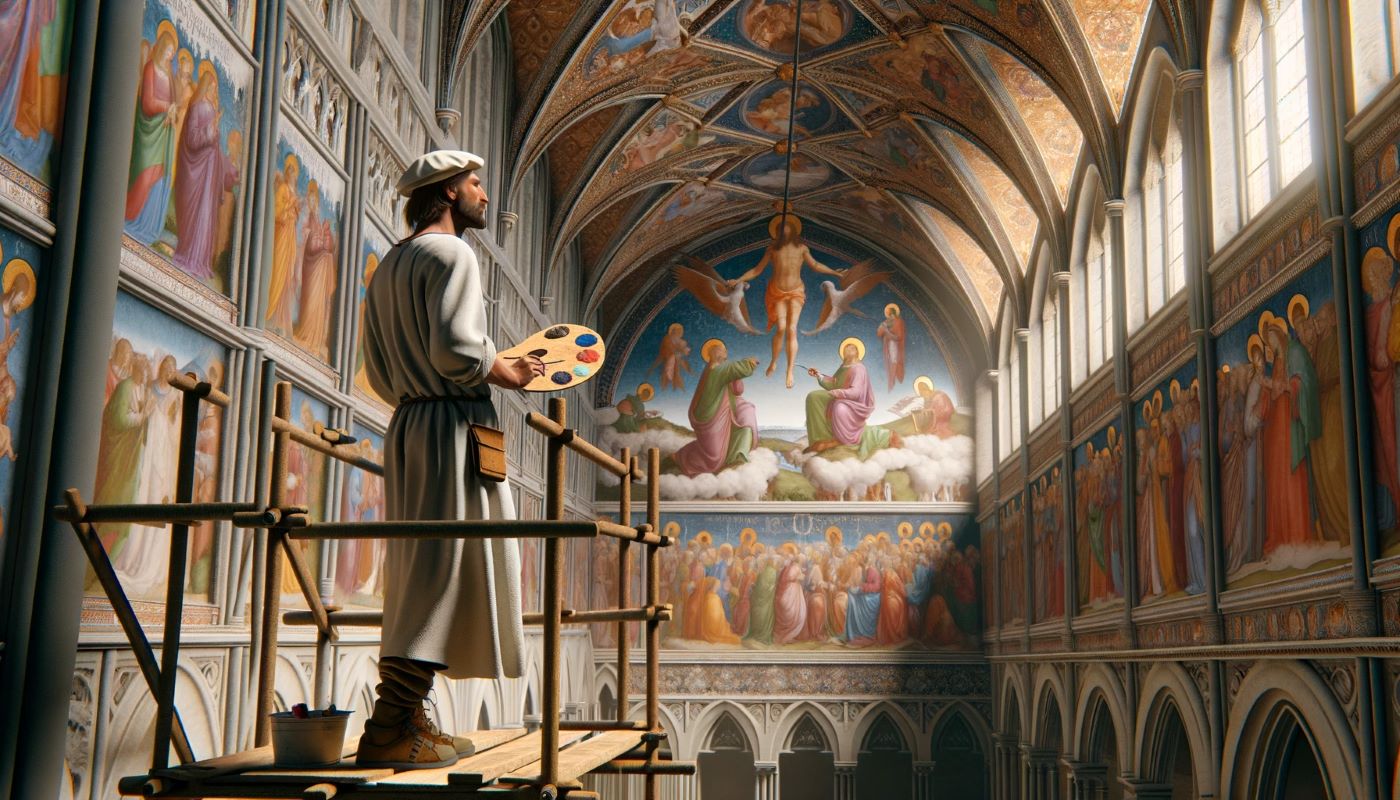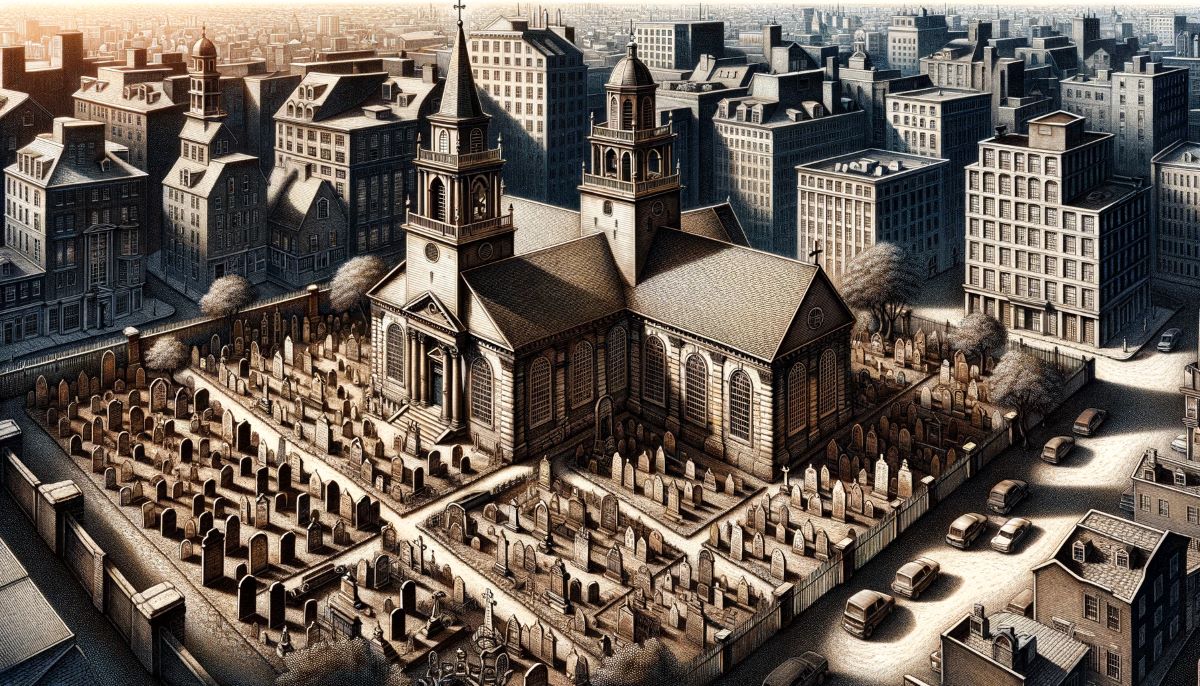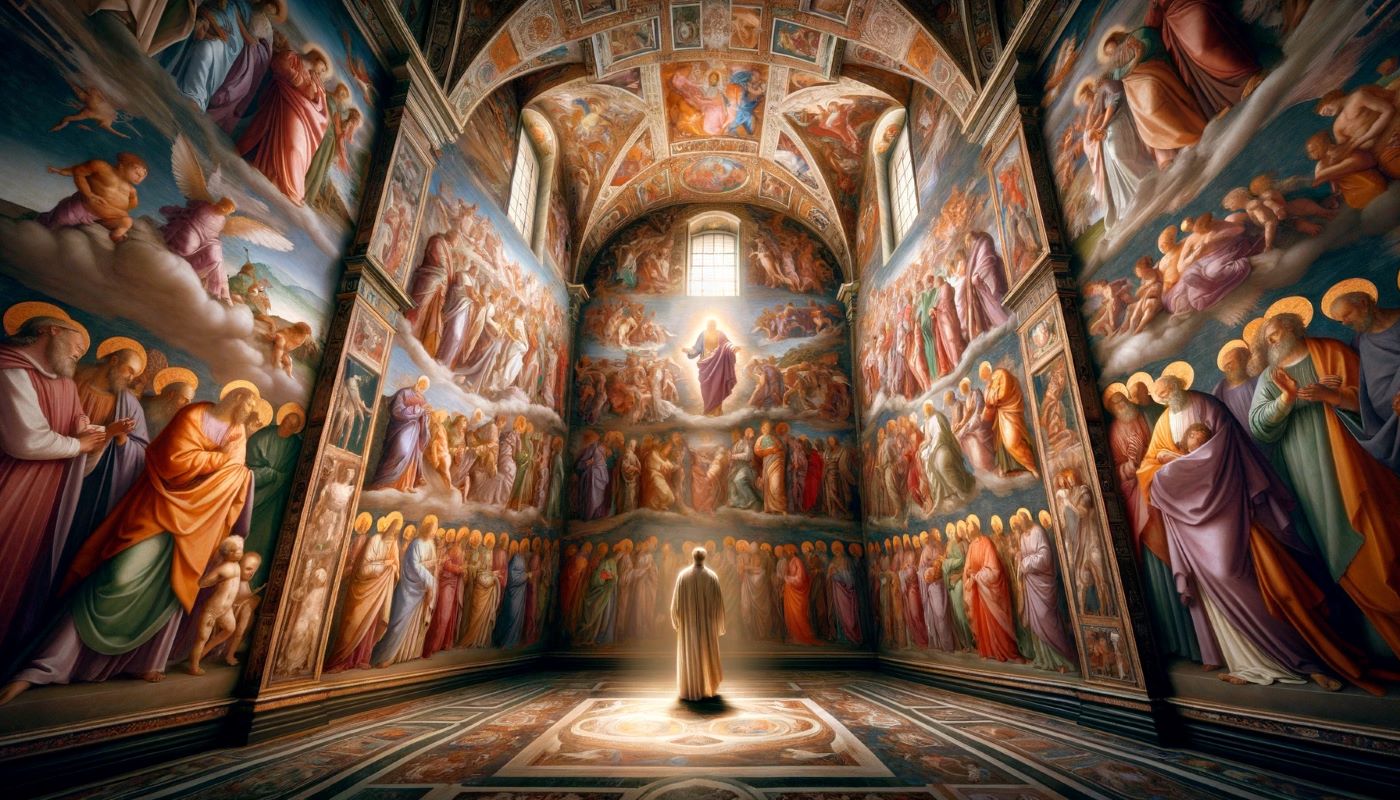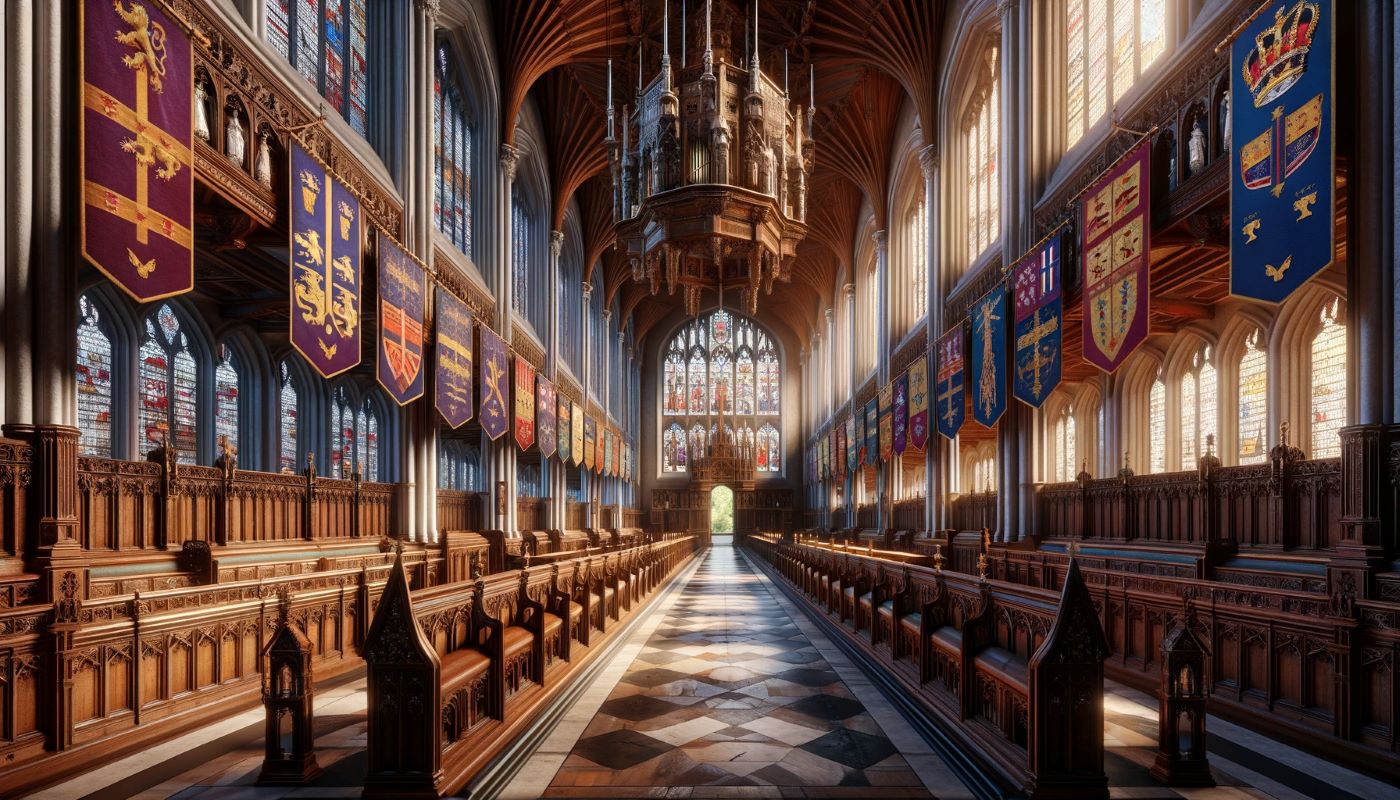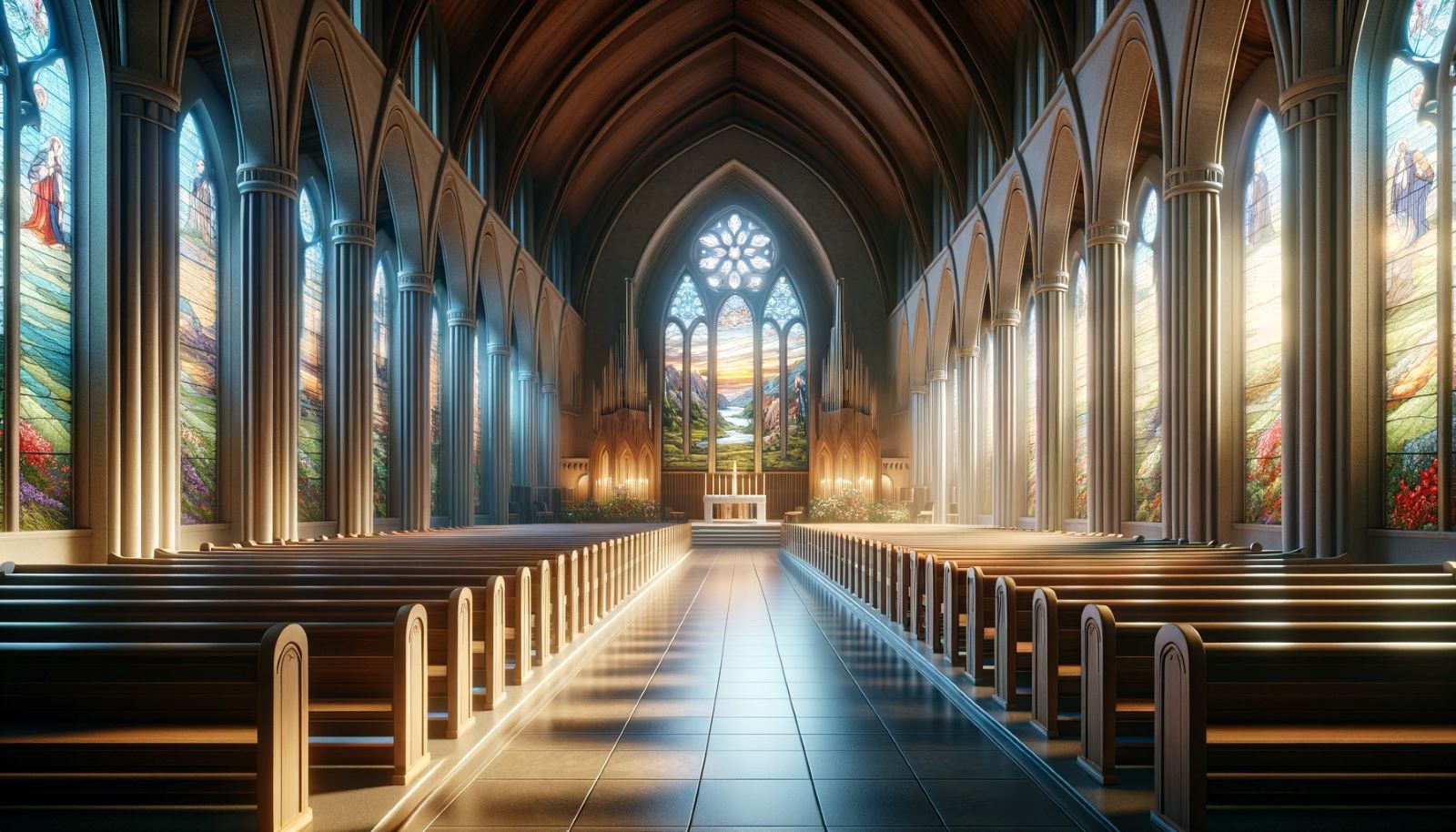Home>Arts and Culture>Who Designed The Air Force Academy Chapel


Arts and Culture
Who Designed The Air Force Academy Chapel
Published: March 4, 2024
Peter Smith, Editorial Director at Christian.net, combines deep insights into faith, politics, and culture to lead content creation that resonates widely. Awarded for his contributions to religious discourse, he previously headed a major organization for religious communicators, enhancing dialogue on faith's societal impacts.
Discover the iconic Air Force Academy Chapel and learn about the renowned architect behind this masterpiece. Explore the intersection of arts and culture in this architectural marvel.
(Many of the links in this article redirect to a specific reviewed product. Your purchase of these products through affiliate links helps to generate commission for Christian.net, at no extra cost. Learn more)
Table of Contents
Introduction
Who designed the Air Force Academy Chapel? This question has intrigued many visitors and architecture enthusiasts alike. The Air Force Academy Chapel, located in Colorado Springs, is a renowned architectural marvel that has captivated the attention of people from all walks of life. Its unique design and spiritual significance make it a symbol of inspiration and innovation. In this article, we will delve into the history and intricacies of the Air Force Academy Chapel, exploring the architect behind its creation, the distinctive design elements, the challenges faced during construction, and the enduring impact it has had on the Air Force Academy.
Read more: Who Was The Sistine Chapel For
The Architect Behind the Air Force Academy Chapel
The visionary architect behind the iconic Air Force Academy Chapel was Walter Netsch, a prominent figure in the world of modernist architecture. Netsch, known for his innovative approach and bold designs, was selected to lead the project in 1955. His vision for the chapel was to create a structure that not only served as a place of worship but also embodied the spirit and values of the United States Air Force. Netsch's design was inspired by the aircraft and space exploration, reflecting the academy's commitment to excellence and advancement. His groundbreaking concept for the chapel set the stage for a structure that would become a symbol of architectural ingenuity and spiritual significance.
Walter Netsch's architectural expertise and forward-thinking mindset were instrumental in shaping the distinctive features of the Air Force Academy Chapel. His ability to seamlessly blend form and function resulted in a design that defied traditional norms and pushed the boundaries of architectural expression. Netsch's innovative use of materials, such as aluminum, and his unconventional approach to geometric shapes, contributed to the creation of a visually striking and structurally impressive edifice. His meticulous attention to detail and unwavering dedication to his craft are evident in every aspect of the chapel's design, making it a testament to his enduring legacy in the world of architecture.
Netsch's profound understanding of the Air Force Academy's mission and values allowed him to infuse the chapel with symbolism and purpose. The soaring spires and sweeping lines of the structure were not just architectural flourishes but deliberate representations of flight and ascension, paying homage to the academy's commitment to aerospace excellence. Netsch's ability to translate abstract concepts into tangible architectural forms resulted in a chapel that not only served as a place of worship but also stood as a powerful emblem of the academy's identity and aspirations.
In summary, Walter Netsch's visionary leadership and innovative design approach were pivotal in bringing the Air Force Academy Chapel to life. His ability to marry architectural innovation with symbolic representation has left an indelible mark on the landscape of religious architecture and solidified the chapel's status as a timeless masterpiece.
The Unique Design Elements of the Chapel
-
Spires and Symbolism: The Air Force Academy Chapel is renowned for its distinctive spires, which soar skyward, symbolizing the aspirations and achievements of the United States Air Force. The 17 spires, arranged in a row, represent the spires of the aircraft, paying homage to the academy's dedication to aerospace excellence.
-
Geometric Precision: The chapel's design is characterized by geometric precision, with intricate angles and lines that create a sense of movement and dynamism. The use of geometric shapes, such as hyperbolic paraboloids, reflects the academy's commitment to innovation and technological advancement.
-
Natural Light and Reflection: The interior of the chapel is bathed in natural light, which filters through the stained glass windows, creating a serene and contemplative atmosphere. The play of light and shadow within the space enhances the spiritual experience, inviting visitors to reflect and find solace within the chapel's walls.
-
Materials and Texture: The use of materials such as aluminum, glass, and steel contributes to the chapel's modern aesthetic and structural integrity. The juxtaposition of sleek, reflective surfaces with the warmth of natural materials creates a visually captivating environment that harmonizes with the surrounding landscape.
-
Unity in Diversity: The chapel's design embodies the concept of unity in diversity, with separate chapels dedicated to different faith traditions coexisting within the same structure. This inclusive approach reflects the academy's commitment to fostering a diverse and inclusive community, where individuals of all backgrounds are welcomed and respected.
-
Integration with Nature: The chapel's location amidst the stunning backdrop of the Rocky Mountains is a testament to its seamless integration with the natural environment. The surrounding landscape becomes an integral part of the chapel's design, enhancing the overall experience for visitors and reinforcing the connection between spirituality and the natural world.
-
Timeless Elegance: Despite its modernist design, the Air Force Academy Chapel exudes a timeless elegance that transcends architectural trends. Its enduring appeal lies in its ability to evoke a sense of awe and inspiration, standing as a testament to the power of human creativity and ingenuity.
In summary, the unique design elements of the Air Force Academy Chapel, from its soaring spires to its harmonious integration with nature, contribute to its status as a revered architectural masterpiece and a symbol of spiritual significance.
The Construction and Challenges Faced
The construction of the Air Force Academy Chapel presented a myriad of challenges that tested the ingenuity and perseverance of the architectural and construction teams involved. One of the primary obstacles faced during the construction process was the unprecedented nature of the design itself. The innovative use of geometric shapes and unconventional architectural forms required meticulous planning and precise execution, pushing the boundaries of traditional construction methods. The complex interplay of angles and curves demanded a high degree of precision, posing significant challenges in terms of structural integrity and material utilization.
Furthermore, the sheer scale of the project presented logistical and engineering challenges that had to be overcome. The chapel's soaring spires, reaching a height of 150 feet, required specialized construction techniques and equipment to ensure their stability and safety. The intricate framework of the chapel's interior, with its sweeping lines and geometric patterns, demanded a level of craftsmanship and attention to detail that was unprecedented at the time. The integration of natural light and reflective surfaces added another layer of complexity to the construction process, requiring innovative solutions to achieve the desired aesthetic and functional goals.
In addition to the technical and logistical challenges, the construction of the Air Force Academy Chapel also faced external pressures and constraints. The project had to adhere to strict budgetary limitations and timelines, adding another layer of complexity to an already ambitious undertaking. The need to balance artistic vision with practical considerations posed a constant challenge, requiring the construction teams to find creative and efficient ways to bring the architect's vision to life within the established parameters.
Despite these formidable challenges, the construction of the Air Force Academy Chapel ultimately prevailed, thanks to the unwavering dedication and collaborative efforts of the architects, engineers, and construction teams involved. Their ability to overcome adversity and push the boundaries of architectural innovation resulted in the creation of a timeless masterpiece that continues to inspire and captivate visitors from around the world.
The Impact of the Chapel on the Air Force Academy
The Air Force Academy Chapel stands as a profound symbol of inspiration and spiritual significance, leaving an indelible impact on the Air Force Academy and all who encounter its awe-inspiring presence. The chapel serves as a focal point for the academy community, providing a sacred space for reflection, worship, and communal gatherings. Its inclusive design, featuring separate chapels for various faith traditions, fosters a sense of unity and diversity within the academy, promoting an environment of respect and understanding among cadets, faculty, and visitors.
The chapel's architectural magnificence and symbolic representation of flight and ascension resonate deeply with the core values of the Air Force Academy, instilling a sense of pride and purpose within the academy community. The soaring spires and geometric precision of the chapel serve as a constant reminder of the academy's commitment to excellence, innovation, and the pursuit of lofty aspirations. The chapel's integration with the natural landscape of the Rocky Mountains further reinforces the academy's connection to the environment and the broader context of its mission.
Beyond its architectural and symbolic significance, the Air Force Academy Chapel plays a pivotal role in shaping the spiritual and moral development of cadets. It provides a sanctuary for cadets to seek solace, guidance, and strength as they navigate the rigorous demands of their training and education. The chapel's serene interior, bathed in natural light and adorned with striking stained glass windows, offers a tranquil retreat for contemplation and introspection, nurturing the spiritual well-being of those who enter its hallowed halls.
Moreover, the Air Force Academy Chapel serves as a beacon of hope and inspiration for the broader community, welcoming visitors from across the globe to experience its transcendent beauty and profound symbolism. Its status as a revered architectural masterpiece has garnered international acclaim, drawing admirers and scholars alike to study its design and significance. The chapel's enduring legacy as a symbol of faith, courage, and human achievement continues to resonate far beyond the confines of the Air Force Academy, leaving an enduring impact on all who are touched by its grace.
In essence, the Air Force Academy Chapel stands as a testament to the power of architecture to inspire, uplift, and unite. Its impact on the Air Force Academy transcends the physical realm, shaping the hearts and minds of all who encounter its majesty, and reaffirming the enduring bond between human creativity, spirituality, and the pursuit of excellence.


